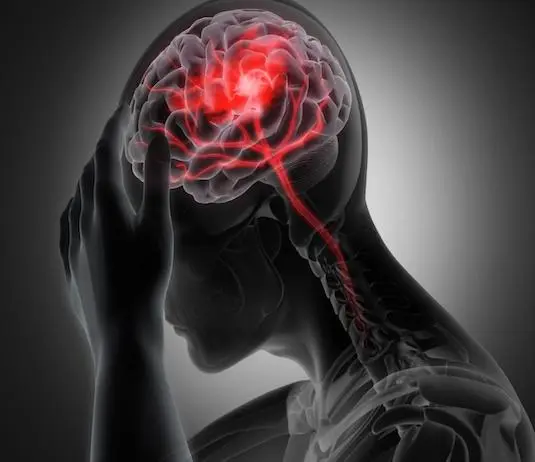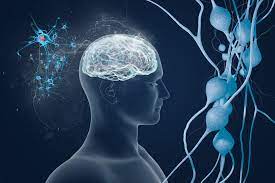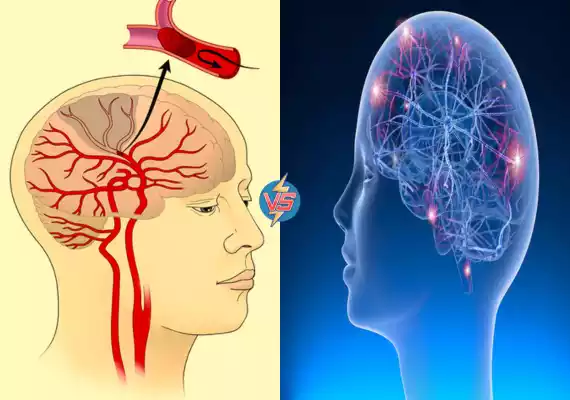Introduction of TIA and Seizure
TIA and Seizure are two separate neurological events with similar, alarming symptoms that may be easily misunderstood by both individuals and healthcare professionals.
TIA, commonly referred to as a mini-stroke, results from temporary disruption of blood flow to the brain that results in sudden weakness, speech difficulties, or visual disturbances; seizures result from abnormal electrical activity in the brain that can range from convulsions and loss of consciousness to more subtle manifestations.
Understanding the differences between TIAs and seizures is vital, as their causes, diagnostic procedures, and treatment approaches differ considerably. TIAs usually result from vascular issues and can act as warning signals of impending strokes. Seizures may have various sources like epilepsy or brain injuries.
What is TIA?
Transient Ischemic Attack (TIA), commonly referred to as a “mini-stroke,” refers to any temporary disruption in blood supply to part of the brain. While similar to strokes in terms of their symptoms and lasting damage, TIAs generally last between minutes and several hours with symptoms eventually clearing completely.

TIAs occur when there is an obstruction or constriction of blood vessels that supply the brain, typically due to factors like blood clots, atherosclerosis (the buildup of fatty deposits in arteries), or small pieces of plaque breaking off and temporarily blocking blood flow.
Symptoms can range from sudden weakness or numbness on one side of the body to difficulty speaking or understanding speech, visual disturbances, dizziness, and loss of balance or coordination often as soon as minutes after experiencing sudden weakness or numbness on one side difficulty speaking or understanding speech as well as dizziness and balance or coordination issues.
An early warning sign, TIAs serve as an early indicator that someone may be at a greater risk for full-blown stroke in the near future. Seeking medical assistance quickly following a TIA to ascertain its cause and implement preventative measures is therefore crucial for recovery.
Including medications to manage blood pressure, cholesterol, and clotting as well as lifestyle modifications such as improving diet and increasing physical activity levels. Effective management may significantly lower this risk possibly saving lives.
What are the causes of TIA?
Transient Ischemic Attacks (TIAs) are typically caused by temporary interruptions in blood supply to certain areas of the brain. Common causes for TIA include:
- Atherosclerosis: When plaque builds up in the arteries that feed blood to the brain, its blood flow decreases significantly – potentially leading to transient ischemic attacks (TIA).
- Embolism: Blood clots, plaque or debris from other parts of the body may break free and travel through the bloodstream to the brain, potentially blocking one or more smaller arteries and leading to embolism.
- Narrowing of Blood Vessels: Stenosis or stenotic vessels, wherein arteries narrow due to disease, can restrict blood flow.
- Cardioembolic Causes: Uneven heart rhythms such as atrial fibrillation can result in blood clot formation in the heart that could travel to the brain, leading to transient ischemic attacks (TIA).
- Hypertension (High Blood Pressure): Elevated blood pressure can damage vessel walls and contribute to blood clot formation, potentially leading to strokes or heart attacks.
- Diabetes: Unmanaged diabetes increases the risk of transient ischemic attack by damaging blood vessels and encouraging clot formation.
- Smoking: Smoking can increase the risk of transient ischemic attack (TIA), as its damage to blood vessels promotes clot formation.
- High Cholesterol Levels: Unhealthy cholesterol levels may contribute to atherosclerotic plaque formation.
- Family History: If there is a family history of TIA or stroke, an individual’s risk increases considerably.
Symptoms of TIA
Transient Ischemic Attack (TIA) symptoms may range in severity but usually last only temporarily; symptoms could include:
- Sudden Weakness or Numbness: Commonly observed on one side of the body – typically facial features, arms or legs.
- Problem Speaking: Slurred Speech or Difficulties Understanding Others.
- Vision Issues: Blurred vision or sudden loss of vision in one or both eyes is a potential risk.
- Dizziness or Loss of Balance: Dizziness refers to any sensation of being Unsteady or Lack of Coordination and often causes symptoms in those around them.
- Severe Headache: An acute and intense headache often accompanied by other TIA symptoms.
- Confusion or Memory Loss: Temporary memory problems or mental confusion.
When is the best time to seek medical advice?
In the beginning stages of a TIA, It’s impossible to determine if you’re suffering from a TIA or a stroke.
It’s crucial to dial immediately 999 and request an ambulance in the event that you or anyone else is suffering from symptoms of TIA or stroke. Even if your symptoms do not disappear as you wait for the ambulances to show up, you will be evaluated at the hospital.
You must be referred to seek out a doctor as soon as you notice the beginning of your symptoms. The presence of a TIA is a sign that you might be at risk of an unintentional stroke soon. it can be used to aid doctors in determining the most effective way to minimize the likelihood of it happening.
If you believe you might have suffered from a TIA before, but the symptoms have gone away and you didn’t consult a doctor at the time, you should make an appointment as soon as possible with a doctor. They can decide whether you should refer you to an examination at a hospital.
Risk factors of TIA
Transient Ischemic Attacks (TIAs) can be seen as warning signals for impending stroke, though their risks vary widely and could increase their chances of happening, including:
- Hypertension: High blood pressure increases can damage blood vessels, increasing their susceptibility to blockages and clots.
- Smoking: Smoking increases both blood pressure and damage to blood vessels, as well as increasing the likelihood of blood clot formation.
- Diabetes: High blood sugar levels can damage blood vessels, increasing your risk for transient ischemic attacks (TIAs) and strokes.
- High Cholesterol: High cholesterol levels contribute to the formation of atherosclerotic plaques that block off blood flow to the brain, restricting its supply.
- Atrial Fibrillation (AFib): This irregular heart rhythm can lead to blood clot formation that travels directly to the brain and cause transient ischemic attack (TIA).
- Age: With increasing age – particularly after 55 – comes greater risk.
- Family History: If there is a family history of TIAs or strokes, this could indicate genetic predisposition.
- Obesity: Being overweight increases your risk of other TIA-related conditions such as hypertension and diabetes.
- Lack of Physical Activity: Sitting for long hours each day increases risk factors associated with obesity and other lifestyle diseases, and can have serious repercussions for health and fitness.
- Alcohol Abuse: Excessive drinking can increase blood pressure and contribute to other risk factors for TIAs.
Treatment Options and Strategies
Treatment strategies and options for Transient Ischemic Attacks (TIAs) typically focus on avoiding more serious strokes in the future.
Some key strategies include:
- Medications: Your doctor may suggest medication to manage various conditions based on risk factors and causes, such as:
- Antiplatelet Drugs: such as Aspirin or Clopidogrel may help prevent blood clots. Anticoagulants like Warfarin may be prescribed when atrial fibrillation or other cardiac issues are involved.
- Blood Pressure: Medications can help control hypertension and lower risk for future transient ischemic attacks (TIAs).
- Lifestyle Modifications: Leading a healthier lifestyle can significantly lower the risk of TIAs and strokes, including:
- Dietary Changes: Lowering sodium, saturated fats, and cholesterol intake while increasing fruits, vegetables, and whole grains consumption.
- Regular Exercise: Engaging in physical activity to maintain a healthy weight and promote cardiovascular wellbeing.
- Smoking Cessation: Quitting smoking is crucial, as it increases your risk for TIAs and strokes. mes Limit Alcohol Intake: Moderating alcohol consumption will lower hypertension risk as well as other potential complications.
- Carotid Endarterectomy: When severe carotid artery stenosis exists, surgery may be recommended to clear away plaque from the carotid arteries and decrease risk of future transient ischemic attacks (TIAs).
- Carotid Angioplasty and Stenting: As an alternative to carotid endarterectomy, carotid angioplasty and stenting uses stents to open narrowed carotid arteries.
- Manage Underlying Conditions: Addressing conditions such as diabetes, high cholesterol and cardiovascular disease is vital in order to lower the risk of TIAs.
- Education and Awareness: Recognizing the signs and symptoms of TIA early can aid in its early diagnosis and management. Seeking medical assistance immediately may assist in early management.
What is Seizure?
A seizure is an abrupt and uncontrolled surge of abnormal electrical activity in the brain that produces disruptive symptoms, often with violent convulsions. Seizures may vary in intensity and duration and are classified into generalized and focal seizures.
Generalized seizures affect the entire brain, leading to loss of consciousness and physical manifestations such as convulsions or muscle rigidity. A well-known form of these seizures is tonic-clonic seizures characterized by consciousness loss, muscle stiffening, and rhythmic jerking.
Focal seizures occur when one specific area of the brain is affected, resulting in various symptoms depending on where they are affected. This could include sensory disturbances, altered consciousness levels or complex behaviors like automatisms.

Epilepsy, head injuries, tumors, infections, metabolic imbalances or genetic factors may all play a part in seizures; diagnosis typically involves reviewing medical history records, neurological exams, and electroencephalogram (EEG) monitoring to help establish the cause.
Treatment depends on the cause; epilepsy is typically managed with anti-seizure medications to control or reduce seizure frequency; lifestyle modifications or surgery may also be appropriate treatments. While seizures may be upsetting, with proper diagnosis and management they can often lead to normal lives.
What are the causes of Seizure?
Understanding the causes of seizures is essential to diagnosis and effective management. Common causes may include:
- Epilepsy: Epilepsy is a neurological condition characterized by unprovoked, recurrent seizures. This form can have either genetic or acquired causes and often begins during childhood or adolescence.
- Head Injuries: Traumatic brain injuries caused by accidents, falls or any form of head trauma may lead to seizure activity immediately or years later.
- Brain Tumors: Tumors can interfere with regular brain activity and even cause seizures.
- Infections: Meningitis, encephalitis or brain abscesses can all contribute to seizures.
- Metabolic Disturbances: Imbalances in electrolytes or blood sugar levels (hypoglycemia or hyperglycemia), metabolic issues or any other metabolic disturbance can trigger seizures.
- Alcohol or Drug Withdrawal: Abruptly stopping drinking alcohol or drugs, especially certain medications or substances, can result in seizures.
- Stroke: Strokes can damage brain tissue and potentially trigger seizures.
- High Fever (Febrile Seizures): Some children may experience seizures during high fever episodes due to viral infections, most often associated with high fever.
- Medication: Misuse or interactions with other drugs may cause seizures to develop.
- Gene Factors: Certain genetic conditions may make people more prone to seizures.
Symptoms of Seizure
Seizures may exhibit various symptoms that depend on the type and area of the brain affected, including:
- Loss of Consciousness: Seizures frequently result in the temporary or complete loss of awareness or consciousness.
- Convulsions: Convulsions are the classic sign of seizure, where uncontrolled muscle contractions cause unintentional, sudden movements to occur in an otherwise healthy person.
- Muscle Stiffness: Muscles may become rigid during certain types of seizures, resulting in stiffening.
- Unusual Sensations: Individuals may experience strange sensations such as tingling, numbness, or the feeling of “electric shocks.”
- Altered Behavior: Epileptic seizures can lead to various behavioral changes, from staring into space to repetitive movements or actions (automatisms).
- Loss of Bladder or Bowel Control: In certain instances, bladder or bowel control may become compromised and cause difficulties for individuals.
- Auditory or Visual Hallucinations: Some seizure types may cause hallucinations-type symptoms, including hearing sounds or seeing things that don’t exist.
- Confusion: Following an epileptic seizure, individuals may experience confusion, disorientation, and memory loss.
When is the best time to seek medical advice?
Once someone experiences their first seizure, or it lasts more than five minutes or results in physical injuries it, seeking medical advice immediately is critical for proper diagnosis, treatment, and reducing risks associated with seizures.
Prolonged seizures should be seen as medical emergencies requiring urgent attention from healthcare providers medical attention may also be necessary if confusion or altered consciousness persists after seizure episodes.
Pregnancy also warrants medical consideration as more seizures may appear during gestation than usual or changes in seizure patterns require immediate review by healthcare providers for early diagnosis and management to minimize risks related to epilepsy as well as potential future risks associated with seizures.
Rick factor of Seizure
Risk factors associated with seizures depend on their type and cause, common ones include:
- Epilepsy: Being exposed to epilepsy either through family history or personal experience increases your risk for frequent seizures and is therefore an important risk factor for epilepsy recurrence.
- Brain Injuries: Traumatic brain injuries caused by accidents, falls or sports-related incidents may increase the risk of seizures both immediately following such trauma and months or years later.
- Brain Tumors: Brain tumors can interfere with normal brain activity and even lead to seizures, leading to seizures as a possible outcome.
- Infections: Meningitis or encephalitis infections may result in seizures during their acute phase.
- Metabolic Disorders: Imbalances in electrolytes, blood sugar levels or other metabolic issues can trigger seizures.
- Alcohol or Drug Abuse: Abusing substances, particularly withdrawal from certain drugs, may result in seizures.
- Genetic Factors: Certain genetic conditions can increase an individual’s susceptibility to seizures.
- Strokes: Strokes can damage brain tissue, increasing the risk of seizures afterward.
- Vascular Abnormalities: Arteriovenous Malformations (AVMs) can alter brain blood flow and lead to seizures.
- Neurological Disorders: Conditions such as Alzheimer’s or multiple sclerosis may increase your risk of seizures.
Treatment option for seizure
- Antiepileptic Drugs (AEDs): These antiepileptic drugs (AEDs) are often the first line of defense against seizures, with each type relying on different therapies depending on its individual effects and response rates. The type of seizure and AED prescribed depends upon each person’s response profile and is prescribed according to these characteristics.
- Lifestyle Modifications: Certain lifestyle adjustments can help manage seizures more effectively, including getting adequate rest, managing stress effectively and avoiding known triggers.
- Ketogenic Diet: For individuals experiencing hard-to-control seizures in children, including difficult-to-treat epileptic fits, a diet high in fat and low in carbohydrates may be advised as part of the management strategy.
- Vagus Nerve Stimulation (VNS): VNS involves surgically implanting a device that stimulates the vagus nerve to reduce seizure activity and seizures.
- Responsive Neurostimulation (RNS): RNS is another surgical option wherein an implanted device monitors brain activity and provides electrical stimulation to prevent seizures.
- Surgery: When seizures are caused by specific brain lesions, injuries, or tumors, surgery to remove these areas may be an option to help manage them.
- Treat Underlying Conditions: If an infection or metabolic disorder is the source of seizures, treating that issue could help stop seizures altogether.
- Emergency Medications: For prolonged or repetitive seizures (status epilepticus), prompt administration of emergency medications is crucial in order to stop and prevent complications associated with seizures.
Key Difference Between TIA and Seizure
Here’s a comparison chart highlighting the key differences between TIA and Seizure:
| Aspect | Transient Ischemic Attack (TIA) | Seizure |
|---|---|---|
| Definition | Temporary interruption of blood flow to the brain, often referred to as a “mini-stroke.” | Abnormal burst of electrical activity in the brain. |
| Duration of Symptoms | Symptoms are temporary, typically lasting for a few minutes to a few hours. | Symptoms can vary in duration and may last from seconds to several minutes. |
| Consciousness | Usually, the person remains conscious throughout a TIA. | Consciousness may be impaired, and the person can lose consciousness during a seizure. |
| Symptoms | Common symptoms include sudden weakness or numbness, speech difficulties, visual disturbances, dizziness, and loss of balance. | Symptoms vary widely and can include convulsions, muscle rigidity, altered consciousness, and sensory disturbances. |
| Underlying Causes | Often related to vascular issues, like blood clots, atherosclerosis, or emboli. | Can result from epilepsy, head injuries, brain tumors, infections, or metabolic imbalances. |
| Diagnosis | Diagnosed through clinical evaluation, imaging tests (MRI or CT scan), and a review of medical history. | Diagnosed through medical history, neurological examination, and an electroencephalogram (EEG). |
| Treatment and Management | Medications and lifestyle changes are commonly used to manage TIA and reduce the risk of stroke. | Treatment depends on the underlying cause and may involve anti-seizure medications, lifestyle adjustments, or surgery. |
| Prognosis | TIAs serve as a warning sign for an increased risk of a future stroke; proper management can reduce this risk. | Seizures may be a one-time occurrence or a chronic condition (epilepsy); treatment aims to control or reduce the frequency of seizures. |
| Long-term Effects | TIAs generally do not result in permanent brain damage, but the risk of stroke may persist. | Seizures may have variable long-term effects, depending on their cause and severity, ranging from no long-term consequences to cognitive and behavioral changes. |
Summary: TIA vs Seizure
A seizure is an uncontrolled surge of abnormal electrical activity in the brain that produces various symptoms that disrupt life. They typically fall into two main categories generalized and focal. Generalized seizures involve the entire brain, leading to loss of consciousness and widespread physical manifestations such as convulsions.
One type is known as tonic-clonic seizure; this condition features unconsciousness, muscle stiffening, and rhythmic jerking. Focal seizures occur in certain brain regions and manifest themselves through symptoms that range from sensory disruptions or altered consciousness to epilepsy, head injuries, tumors, infections, metabolic imbalances, or genetics as possible triggers.

